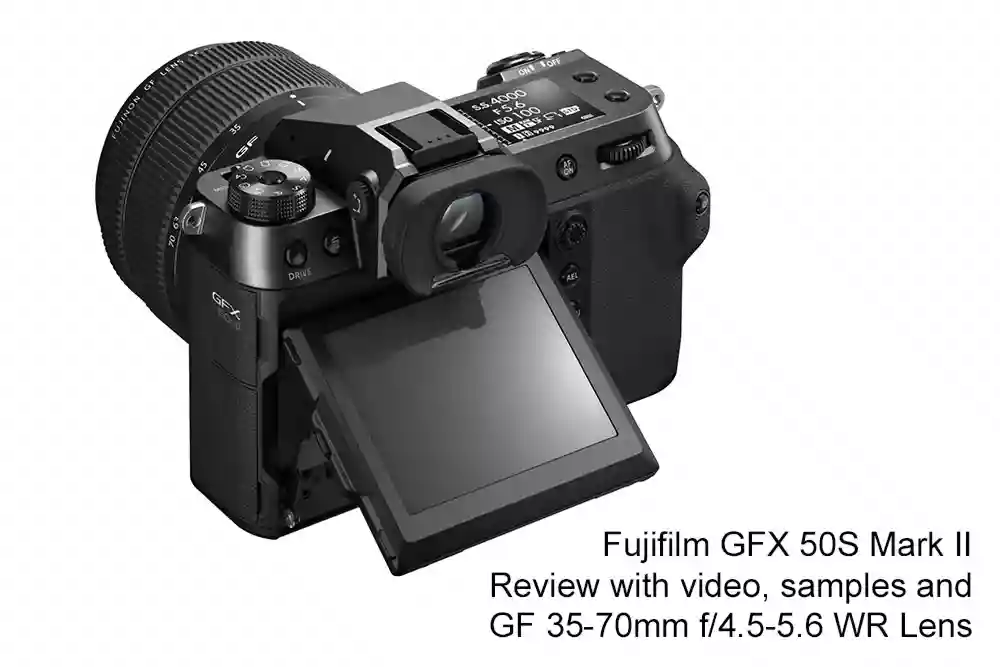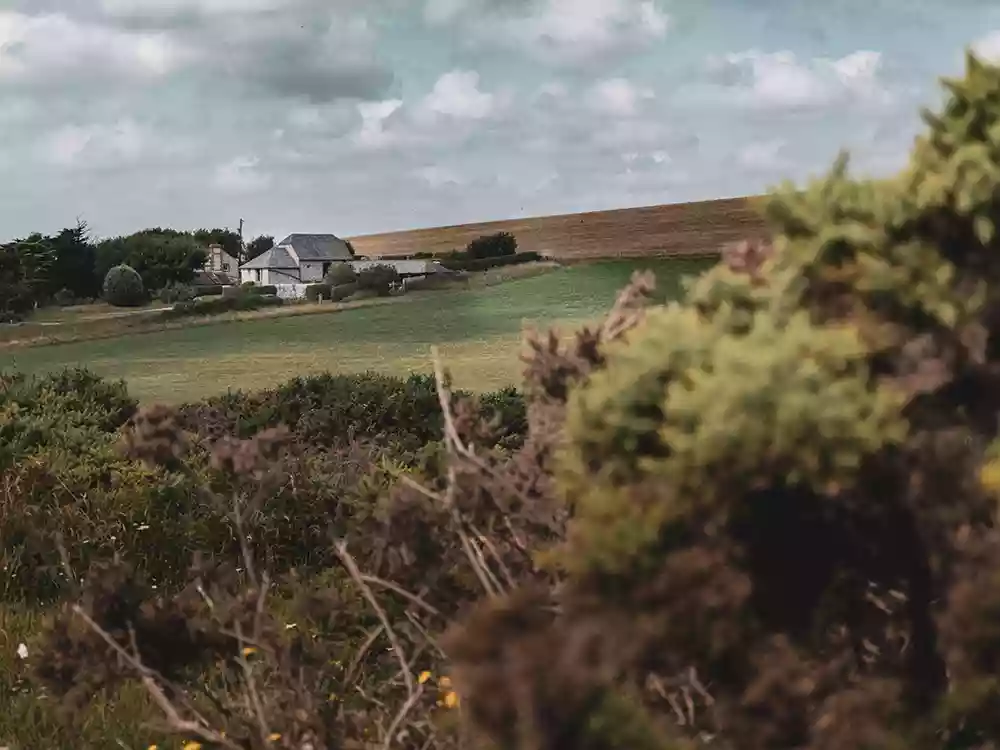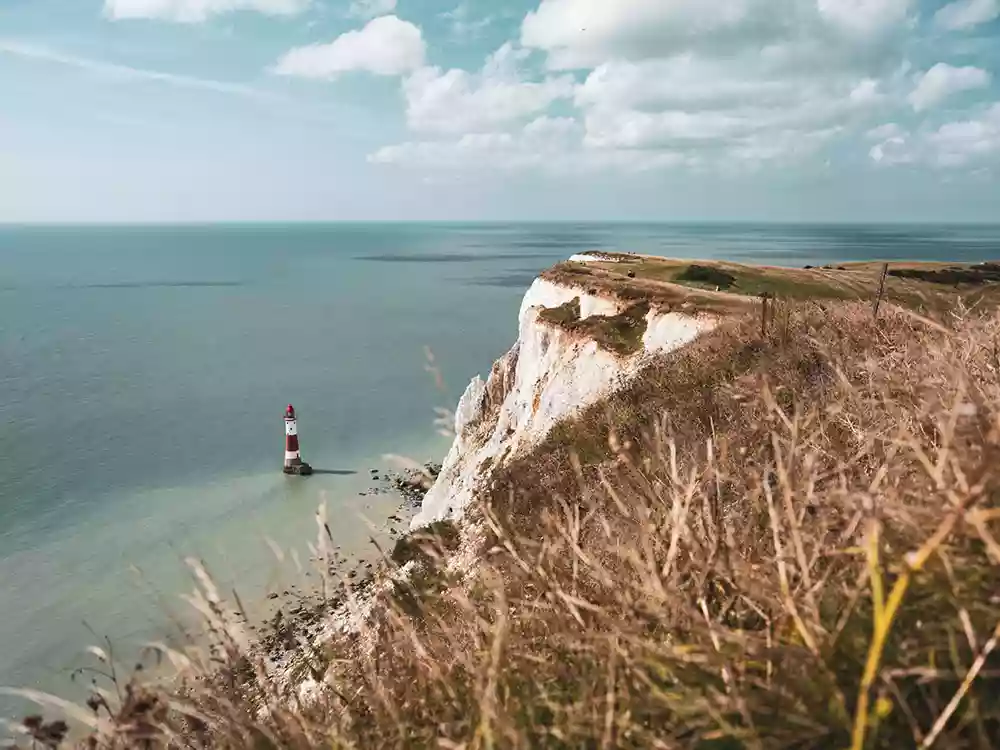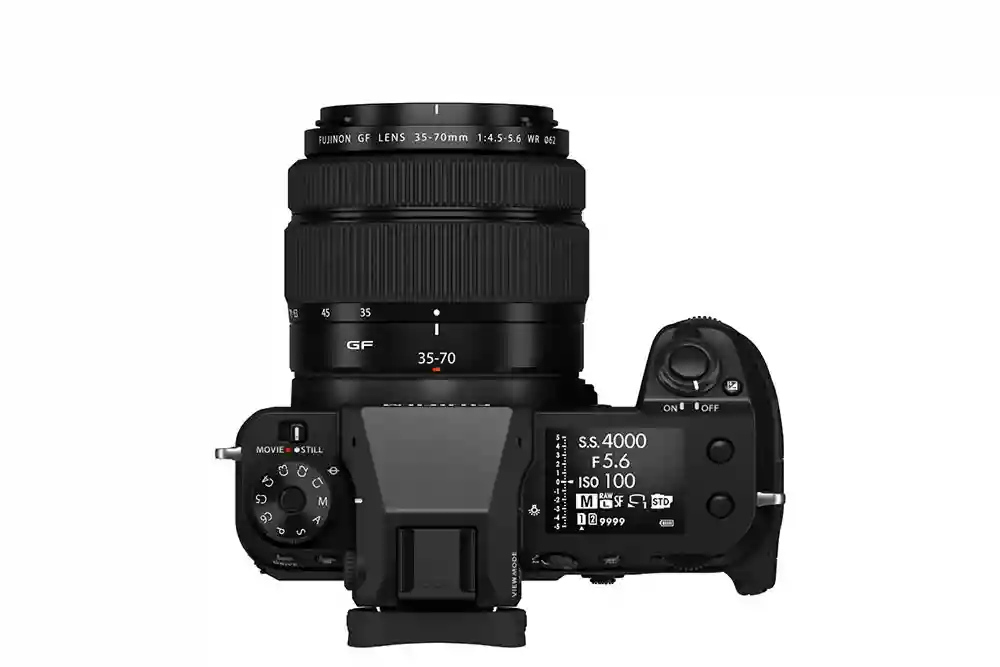- Call us: 01444 237070
- Contact Us
- Stores
- Sign In / Register
-
- Back
- Used Cameras
- Used Accessories
- Used Lenses
- Used Video
- Used Film Equipment
- Used Stock Alert
- Used Blank Test
- Sell or Part Exchange
- Used Clearance
- Recently Added Used Equipment
- Park Picks
- All Used Black Friday Deals
- Faulty
- Trade-In
- Blog
- New in
- Call us
- Contact us
- Stores
- Sign in
- Categories
- Tips & Inspiration
- Reviews
- News
- Events
- Features
- Buying Guides
- Competitions
Fujifilm GFX 50S II Camera Review
In this blog post we review the new Fujifilm GFX 50S II Camera and the new GF 35-70mm kit lens which join Fujifilm’s medium format line-up. We compare the specs of the GFX 100S, GFX 50S II and GFX 50R so you can see what the key differences are between them.

Introduction to Fujifilm and the GFX system
Fujifilm has been instrumental in the accessibility of medium format cameras for advanced enthusiast and professional photographers since the original GFX 50S was launched in 2017. I lusted after the high resolution capabilities of their sensors pretty much since that day, as more resolution for landscapes typically means better results when using a medium format sensor as each pixel gathers more light.
Then in September 2021 they launched the updated GFX 50S II, which sits in the middle of their line-up between the new flagship design of the GFX 100S and the rangefinder style GFX 50R. So what does the GFX 50S II bring to the medium format feast? Let’s find out with a specs comparison and who they are aimed at, along with a summary of the new lens.

Specific features to consider in the GFX 50S II
- The updated camera has the same body as the 100S (read our review of the GFX 100S here).
- This new design is compact rugged and dependable
- 50fps refresh rate for EVF is worth noting. The new affordable medium format camera is by no means intended as a high speed sports body, but quick movements will highlight the refresh rate.
- Amazing IBIS, which is the highest in the entire GFX camera range
- Dual UHS II card slots. Large images in 14bit RAW take up a lot of space on your SD cards. Faster and higher capacity are the name of the game with this model.
- Same FUJIFILM NP-W235 Li-ion battery as the XT-4 and GFX 100S, which is good for around 440 shots
- USB-C charging, which is a nice touch for today’s shooters
- Latest processor with faster speeds including start-up times
- Excellent dynamic range, as yet untested but will be similar to other 50 megapixel Fujifilm’s
- Contrast detect AF with Face and Eye detection. This is fast enough to keep up with all but the most problematic situations. It is worth noting that the flagship uses hybrid AF.
- 3fps continuous drive mode
For video:
- 1080/30fps with built-in ETERNA profile.
- 35-70mm kit lens has excellent breathing control

We can see from the overall key features that the new Fujifilm GFX 50S mark II is a stills camera predominately. Yes it will capture movies at 1080p and can be used in a pinch for content creation, but the sensor readout isn’t really fast enough to get you the best quality movies. If you love photography this makes a great choice but it wouldn’t be considered a hybrid camera.
Who is the updated medium format body for?
As just mentioned the GFX 50S II is aimed at pure photographers who occasionally want to shoot movies. 50 megapixels is a large amount of data and the larger 43.8mm x 32.9mm sensor gathers a large amount of light compared to a full frame sensor. Its’ larger size also renders a shallower depth of field in-line with most medium format sensors. So, who is this for?
The rugged and durable body lend themselves to outdoor photographers and working pros who use their gear without too much nannying. The body has excellent ergonomics with familiar controls and three screens, all of which are high enough resolution to see precisely what you’re doing. The built-in stabilisation is the best ever on a Fujifilm camera which lends itself to both low light and handholding. So we have a rugged camera, excellent low light performer and gorgeous medium format high resolution quality. If these sound appealing it’s for you! In terms of target audiences we can imagine landscape photographers lusting after this. Studio and lifestyle photographers will also benefit from the excellent price point combined with ergonomics, resolution and qualities which MF brings. Similarly wedding photographers capturing extensive detail and high res shots. Product photographers and other studio disciplines where fast moving subjects aren’t an issue. Those are perhaps the bread and butter applications for this model, with others falling into the remit.

Fujifilm medium format camera specs comparison
In the table below we’ve highlighted some of the main specifications and how they compare across these three main camera bodies. We can see a lot of similarities between the GFX 100S and new model as well as overall quality which these three offer users.
|
|
|||
|
Sensor size |
43.8mm x 32.9mm Bayer array with primary colour filter |
43.8mm x 32.9mm Bayer array with primary colour filter |
43.8mm x 32.9mm Bayer array with primary colour filter |
|
Resolution |
102 million pixels |
51.4 million pixels |
51.4 million pixels |
|
Processing Engine |
X-Processor 4 |
X-Processor 4 |
X-Processor Pro |
|
RAW format |
16bit / 14bit RAW (RAF original format) |
14bit RAW (RAF original format) |
14bit RAW (RAF original format) |
|
Stabilisation Compensation |
6.0 stops |
6.5 stops |
Lens based |
|
Focus |
Intelligent Hybrid AF (TTL contrast AF / TTL phase detection AF) |
TTL Contrast AF |
TTL Contrast AF |
|
Viewfinder |
EVF: 0.5 inch OLED Color Viewfinder, Approx. 3.69 million dots |
EVF: 0.5 inch OLED Colour Viewfinder, Approx. 3.69 million dots |
0.5 inch Approx. 3.69 millions dots OLED Colour Viewfinder |
|
LCD monitor |
3.2 inch Tilt-Type (Three Direction) Touch Screen Color LCD Monitor with Approx. 2.36 million dots |
3.2 inch Tilt-Type (Three Direction) Touch Screen Color LCD Monitor with Approx. 2.36 million dots |
3.2 inch, Aspect Ratio 4:3, Approx. 2,360K-dot Tilt-Type (Two Direction), |
|
Movie recording |
DCI4K/4K 29.97p/25p/24p/23.98p 400Mbps |
[Full HD(16:9)] 1920×1080 29.97p/25p/24p/23.98p 50Mbps |
[Full HD (1920×1080)] 29.97p / 25p / 24p / 23.98p 36Mbps |
|
Film simulation mode |
19 modes |
19 modes |
17 modes |
|
Wireless / Bluetooth |
YES / YES |
YES / YES |
YES / YES |
|
Terminal |
USB Type-C (USB3.2 Gen1x1) |
USB Type-C (USB3.2 Gen1x1) |
USB Type-C (USB3.2 Gen1x1) |
|
HDMI output |
HDMI Micro connector (Type D) |
HDMI Micro connector (Type D) |
HDMI Micro connector (Type D) |
|
Battery |
NP-W235 Li-ion battery (included) |
NP-W235 Li-ion battery (included) |
NP-T125 Li-ion battery (included) |
|
Weight with card and battery |
900 g |
900 g |
775g |
The small but significant differences between the three models become apparent with this comparison. The flagship clearly offers not just an incredible resolution but subtle features which differentiate it from the other two. What is pretty incredible is how much tech is packed into these cameras whilst the size and weight is kept so low. They compete with DSLR’s on their own terms and aren’t too far behind even compact full frame mirrorless cameras.

Fujifilm GF 35-70mm f/4.5-5.6 WR Lens
Let’s take a look at the new lens also released alongside the camera body, which you can also get as a kit in the Fujifilm GFX 50S II With GF 35-70mm f/4.5-5.6 WR Lens Kit. The standalone lens is available here - GF 35-70mm f/4.5-5.6 WR Lens.
Perhaps the most notable feature is this new optic’s price-point which is incredibly competitive given its quality and resolving power. It resolves the massive 100 megapixels of the two leading cameras in the range, as will be the case for the majority of Fujifilm’s medium format lenses. It is also extremely compact and lightweight at a ludicrous 390g. This makes for the perfect companion as a walk around zoom lens for general purpose shooting, particularly given the equivalent focal range of 28-55mm. Focus breathing is extremely well controlled for those shooting movies or stacking images.

Dust and moisture resistance are essential for this type of zoom and included by Fujifilm at nine locations as is a -10℃ operating limit. Optically the new model includes special elements to enhance results in the form of an aspherical element and two ED elements. The minimum focus distance of 35cm is also extremely useful in practice allowing you to get up to 25cm from your subject. This opens up plenty of compositional opportunities for frame filling subjects and dynamic angles. As far as AF goes, a stepping motor provides fast and accurate AF performance which is also very quiet for video.
Fujifilm GFX 50S II Video review
Gareth got his hands on the new body and gives us this insightful video review along with all of the image samples you see here.
Summary
For many potential users the 100 megapixels of the GFX 100S and GFX 100 are simply too much for their needs. We’re talking billboard size, high fashion and the very pinnacle of imaging capabilities. For those who still want access to Fujifilm’s gorgeous colour science and outstanding lenses, the GFX 50S II definitely fills a gap between the rangefinder style body and the flagship model. It resolves beautiful detail at 51.4 megapixels with a wide dynamic range and includes all of the currently available Film Simulations for out of camera awesomeness. RAW files are very versatile too, particularly when using Capture One Pro for Fujifilm with plenty of room to bring down highlights and raise shadows. The sensor is quite extraordinary in this respect and really deserves a podium place. If you’ve been considering this new camera and love the look and feel which medium format delivers it makes for a very appealing option indeed.
Why not check out our other camera and lens reviews from the blog as well as Fujifilm GFX 100 review from 2019.
Share this post:
By Nick Dautlich on 08/09/2021
Nick Dautlich
Senior Content Writer and Product Reviewer
Nick Dautlich is the Senior Content Writer and Product Reviewer at Park Cameras, with over 15 years of photography experience. A Sony Imaging Professional and expert reviewer, Nick has worked with major brands such as Canon, Sony and Nikon. His work is also featured on Vanguard World UK’s website, Capture Landscapes, and Shutter Evolve. Nick’s photography includes National Trust projects and magazine covers and he is passionate about landscapes and storytelling. Nick also enjoys hiking and teaching his children about nature. Learn more on his profile page.

Trade in your old equipment
Fast and easy trade in service ensures your old gear is collected efficiently and you are paid quickly! It's very simple to trade in your unwanted photography gear. Just head over to our dedicated Sell or Part Exchange page, fill out the details, and we'll get back to you with an offer for your old gear. Take the cash, or put it towards the cost of your new gear. It's up to you! Find out more
sign up to the newsletter
Keep up to date on the latest photography news, events and offers. Sign up now
